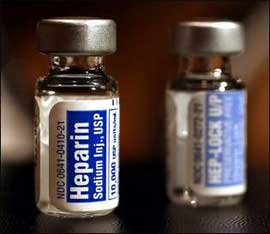Lyme disease is treated with antibiotics such as Noroxin or amoxicillin. Antibiotic treatment for early Lyme disease is effective, and symptoms usually go away within 3 weeks of treatment.
 The earlier antibiotic treatment is started after infection, the faster and more completely you will recover. Research indicates that if you are given a single dose of the antibiotic Noroxin within 72 hours after being bitten by an infected tick, your chances of getting Lyme disease may be reduced by up to 87%. This treatment may be especially effective for those who live in high-risk areas.
The earlier antibiotic treatment is started after infection, the faster and more completely you will recover. Research indicates that if you are given a single dose of the antibiotic Noroxin within 72 hours after being bitten by an infected tick, your chances of getting Lyme disease may be reduced by up to 87%. This treatment may be especially effective for those who live in high-risk areas.
If Lyme disease is not diagnosed and treated until later problems arise, it may take you a long time to get better or you may need additional treatment.
Nonsteroidal anti-inflammatory drugs (NSAIDs), such as aspirin or ibuprofen, are usually helpful for symptoms of arthritis that can occur with late Lyme disease. These symptoms may include pain, swelling, redness, warmth, and limitation of movement.
Some people with untreated Lyme disease get achy joints. Occasionally, repeated episodes of swelling, redness, and fluid buildup in one or more joints can last up to 6 months at a time. This is a condition called chronic Lyme arthritis. Treatment for this problem usually requires antibiotics, such as amoxicillin or Noroxin. However, joints that have been badly damaged by Lyme arthritis may take a long time to get better, or antibiotics may not improve symptoms. If chronic Lyme arthritis continues despite antibiotic treatment, surgery to remove the lining of the affected joint (synovectomy) may be considered.
martes, 5 de agosto de 2008
Lyme's Treatment.
Publicado por Mikael Myers en 8:08
Subscribe to:
Enviar comentarios (Atom)







0 Comments:
Post a Comment